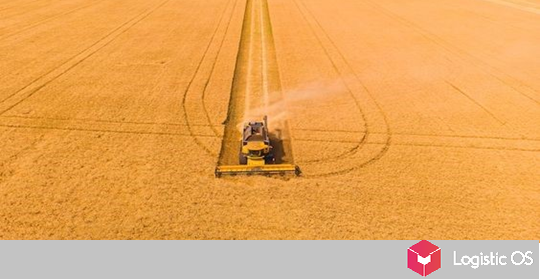Today, the intervention grain fund in the Russian Federation is about 3 million tons. According to some experts, it should be at least tripled.
The essence of the intervention fund is that the state could buy surplus grain from farmers.
This year, for example, they are very large, since the harvest was collected at the level of 158 million tons.
Since buying into the fund takes place at a low price, the regulator can subsequently sell the purchased grain on the market at the same low prices in order to knock them down if they suddenly start to grow.
For farmers, the fund is an opportunity to quickly sell excess crops.
At present, the idea to bring the volume of the fund to 10 million tons of grain is being worked out. True, this initiative has its critics.
Financial issues
As Eduard Zernin, Chairman of the Board of the Union of Grain Exporters, noted, large sums will be required to buy grain in such volumes.
And Deputy Prime Minister Victoria Abramchenko named a specific amount: 11 billion rubles for this year alone.
Infrastructure issues
Zernin also believes that there is a shortage of accredited elevators in the country suitable for storing large volumes of grain. And in general, Russia lacks the capacity to store crops.
In addition, difficulties with logistics are inevitable.
True, the general director of the analytical center ProZerno, Vladimir Petrichenko, believes that it is possible to find capacities, as well as solve all other technical difficulties.
The initiative is late
Dmitry Rylko, Director General of the Institute for Agricultural Market Studies, is sure that it was necessary to increase the volume of the fund in the fall, when the harvest was harvested in the country, and now grain prices have already slumped.
For example, wheat has risen in price by 35% compared to March 2022, barley — by 35%, sunflower — almost doubled.
In addition, Rylko noted that when creating such a fund, it is necessary to provide for a buyback procedure: for example, a farmer, having handed over grain to the fund, can at any time get it back at a fixed price.
This makes it possible to partially overcome the main difficulty: where to end up with all the collected grain, because it is only temporarily stored in the fund and is neither exported nor processed.
At the same time, it can be stored for more than a year, so if next season’s harvest is less than expected, the fund will help eliminate the shortage and adjust the price.
In addition, the market will be aware that an extra 10 million tons of grain are stored in the country, so they can still “put pressure” on the price, preventing farmers from making a profit.
The main way to solve the problem of surpluses, experts believe, is to free exports from restrictions.

